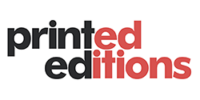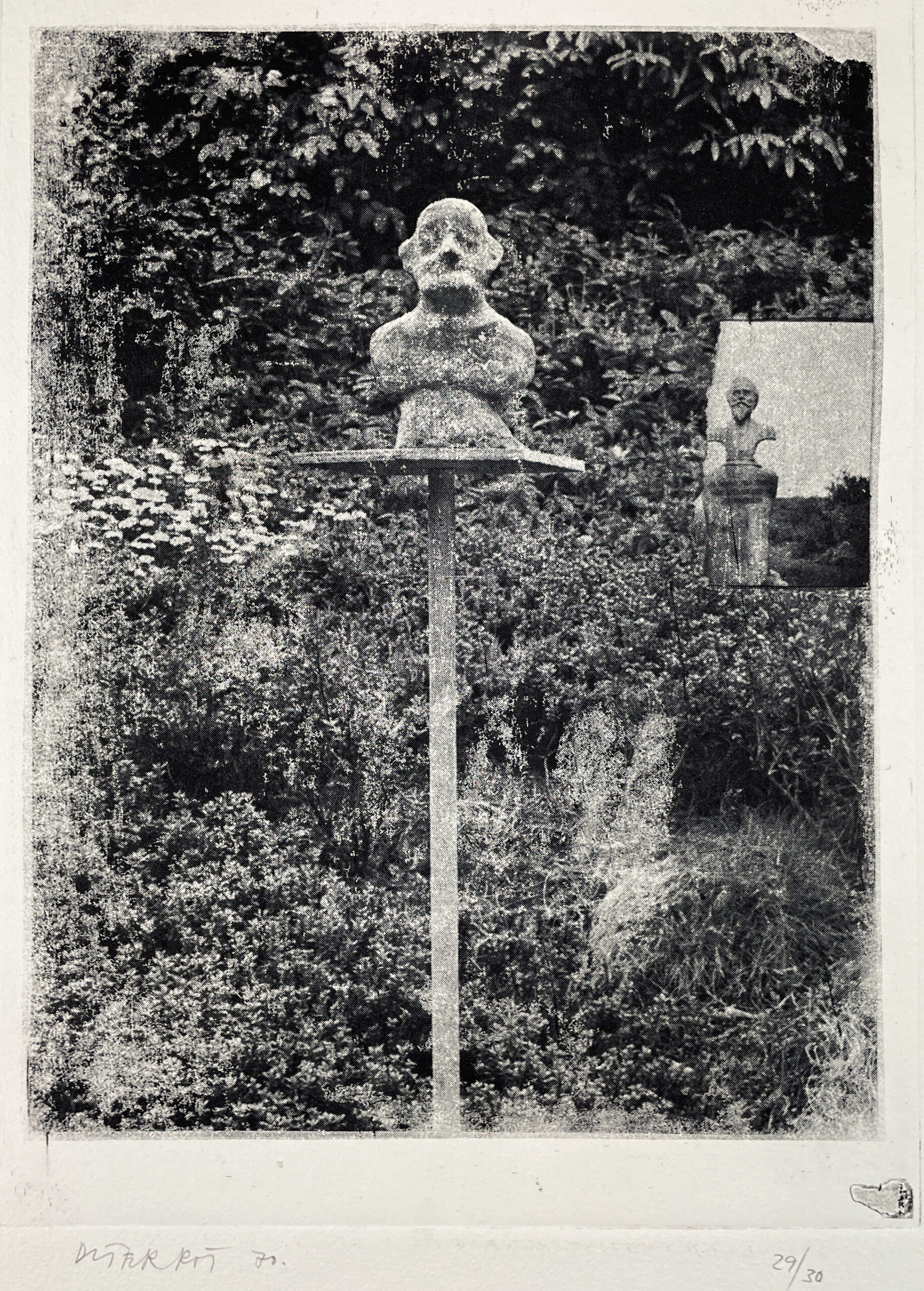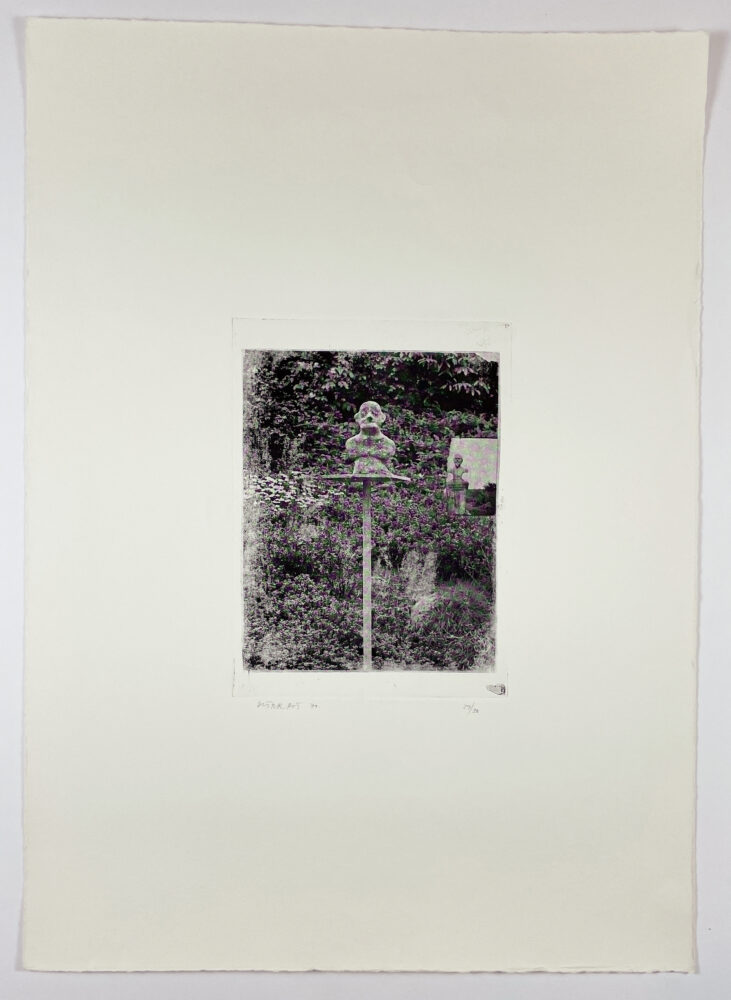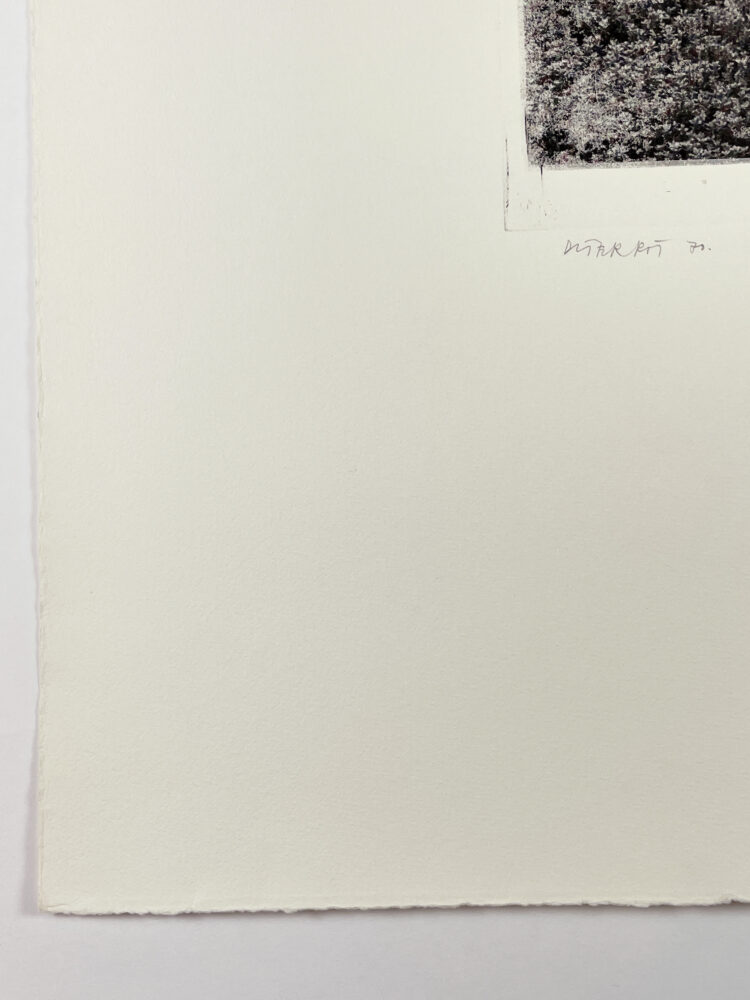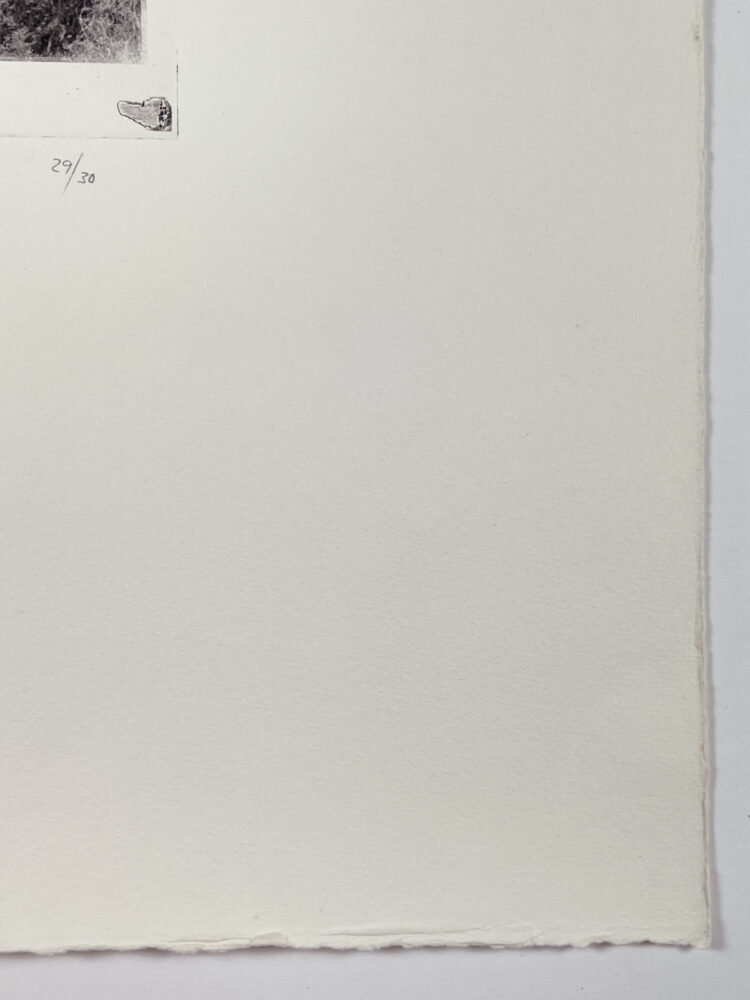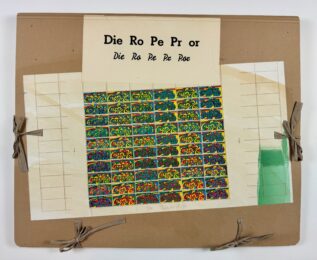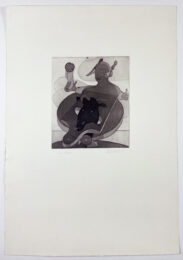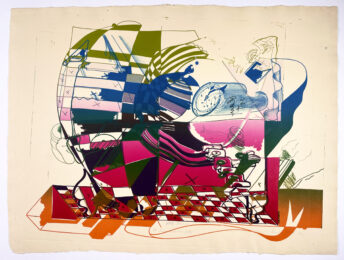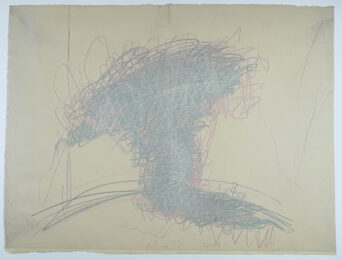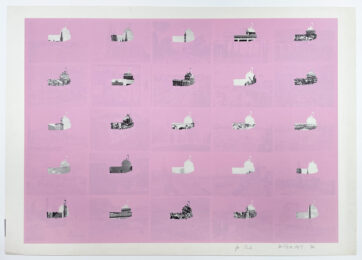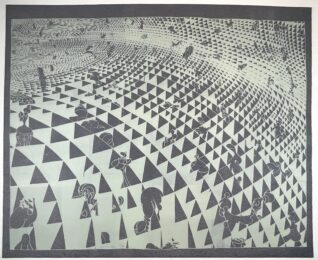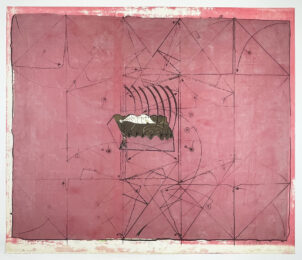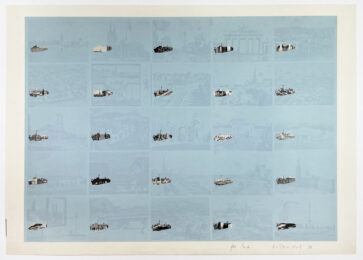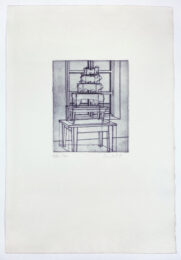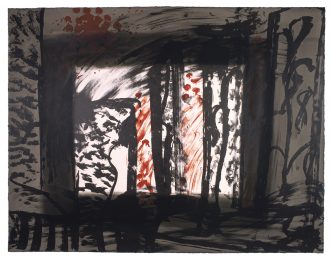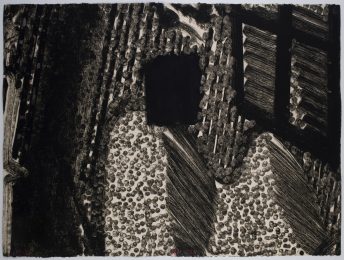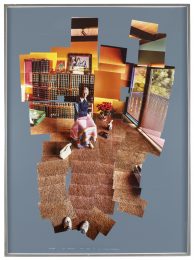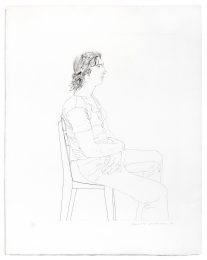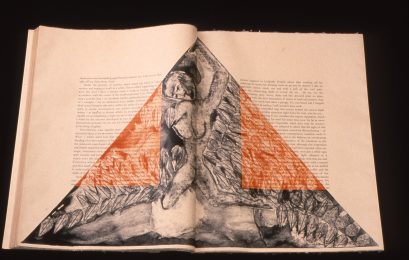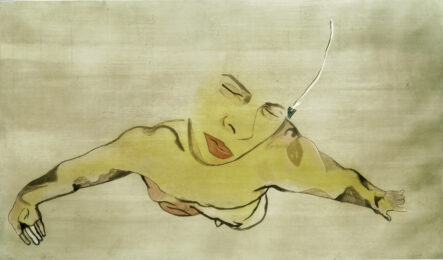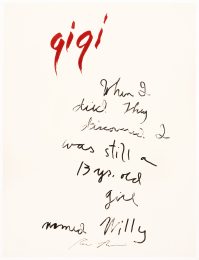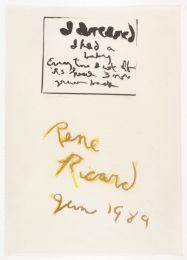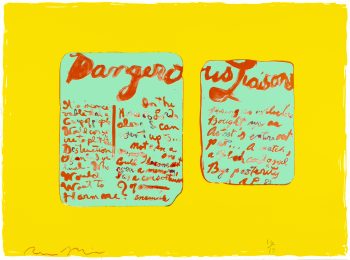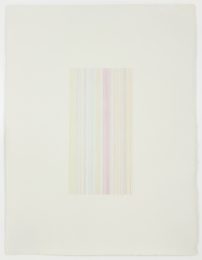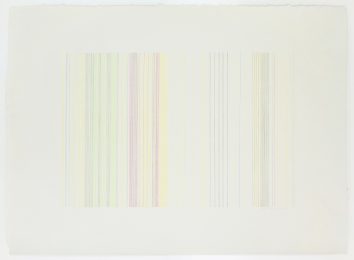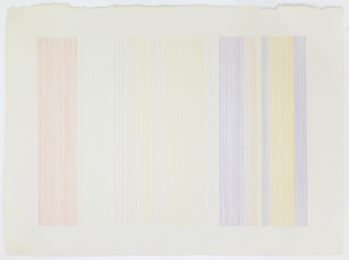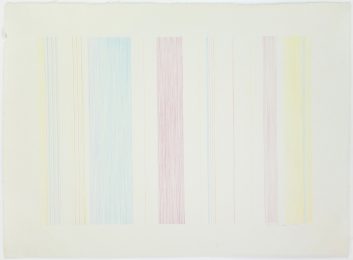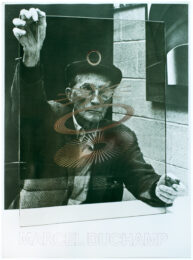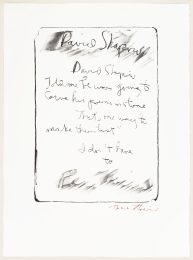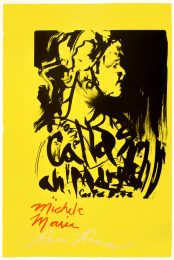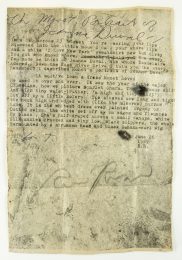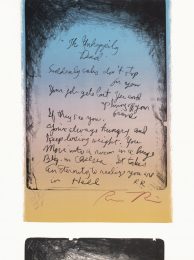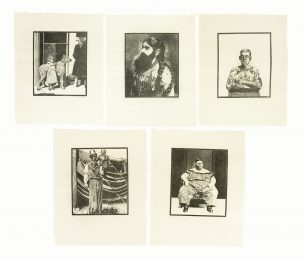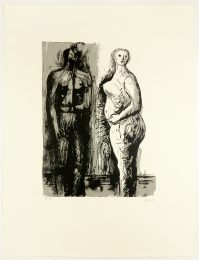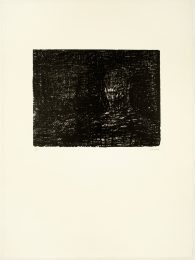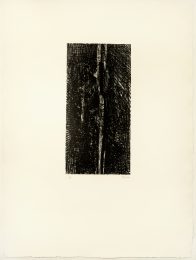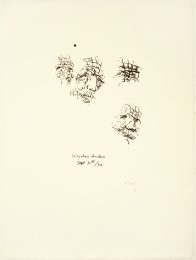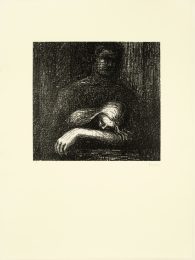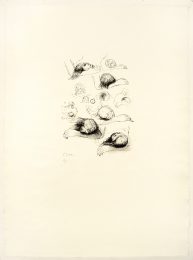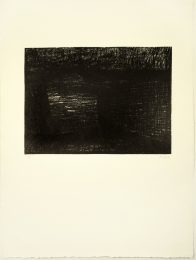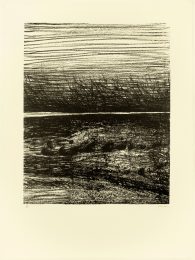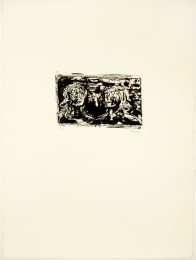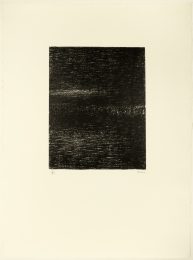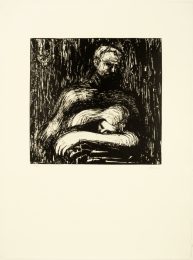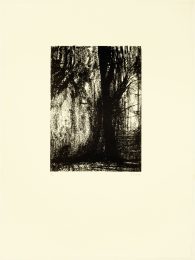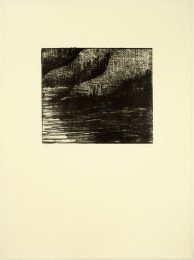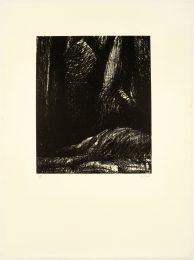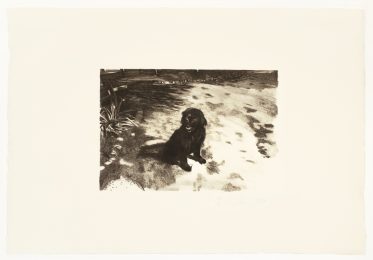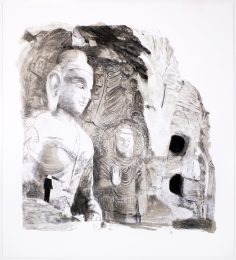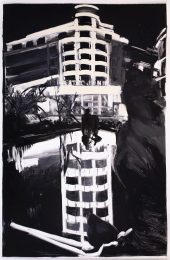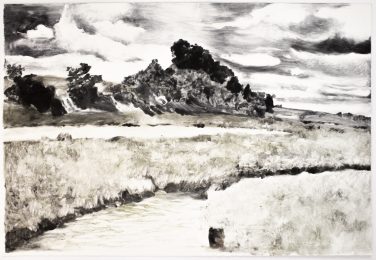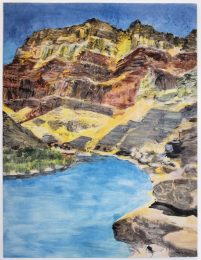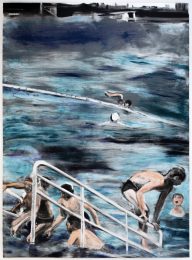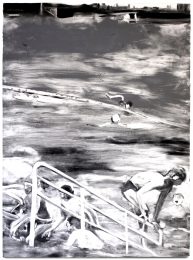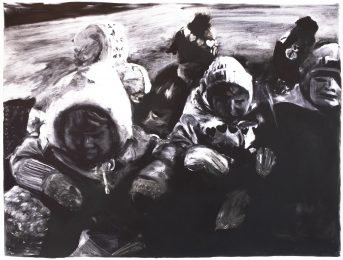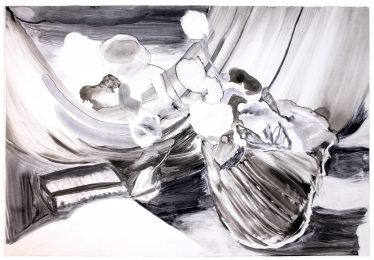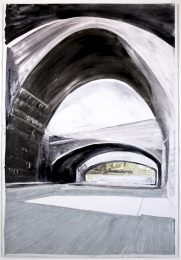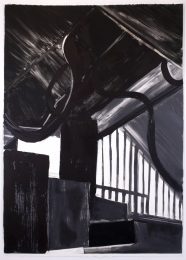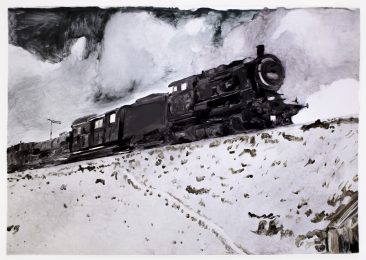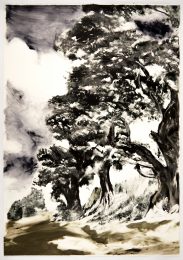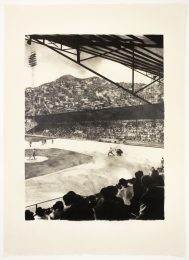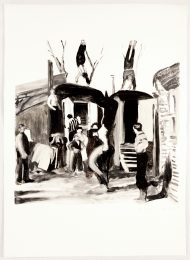Details — Click to read
P.o.th.A.a. Vfb (Portrait of the Artist as Vogelfutterbüste) 1970
Plate 12.4 x 8.6 in. / 31.5 x 22 cm / Paper 30.7 x 21 in. / 78 x 53.5 cm
Intaglio printing (halftone block) in black on white handmade paper.
Edition of 30 with 5 artists proofs. Numbered 29/30 lower right in pencil.
Signed and dated by the artist lower right in pencil. Printed by Emil Schult, Düsseldorf, and published by Dieter Roth, Düsseldorf. (Roth 128)
This print reproduces a photo of Roth’s chocolate and birdseed sculpture self portrait. “Vogelfutterbüste” translates to “birdseed bust” in German. MOMA’s Wait, Later This Will Be Nothing:
Editions by Dieter Roth describes “…group of chocolate multiples Roth made in the late 1960s. The title is a reference to the 1916 novel A Portrait of the Artist as a Young Man, by James Joyce, but the work is a portrait of Roth as an old man, cast in a mixture of chocolate and birdseed. It is intended to be mounted on a post in the open air and consumed by birds until nothing remains. Unlike a traditional marble portrait bust, meant to endure through the ages, this work is a testament to Roth’s belief in impermanence and the inevitability of aging and bodily decay.”
Condition: 3 creases lower right of sheet. Two creases along right edge of sheet. 5 horseshoe creases scattered across upper sheet. 2” crease lower right corner.
Dieter Roth was a printmaker from childhood: his first etching at the age of 16 was scratched into a soda can, and despite the relative failure of the can to print anything but a shadow of ink, he continued his study and by 20 was a serious apprentice in lithography to a well-known commercial artist, Eugen Jordi. Later he would continue to print and publish much of his own work. From the 1960s onward, his collaborations with Petersburg Press brought him international recognition and produced some of his most celebrated work: 6 Piccadillies (1970), and Containers (1972).
Interested in chance and spontaneity, Roth was drawn to make prints using unorthodox means: according to mathematical principles, using equations, or by randomly rearranging blocks before they were run through the press. The artist often printed plates repeatedly in different colors, producing many variations from just a few images. He used the printing press and materials to interrogate the creative process rather than just as tools to achieve an edition of identical prints: for example, overprinting or under-inking, or running objects through the press (in 1968, a box of chocolates). Roth was not just interested in the chance of making pictures but the unpredictability of decay: allowing the grease from slices of meat to slowly contaminate paper, immersing a print in vegetable juice, clamping metal to paper to produce rust, and pouring chocolate over a finished work.
Roth would make hundreds of print editions and books over his career and blurred the line between genres and mediums, embarking on prodigious collaborations and experimentation with music, poetry, art, and literary works.
